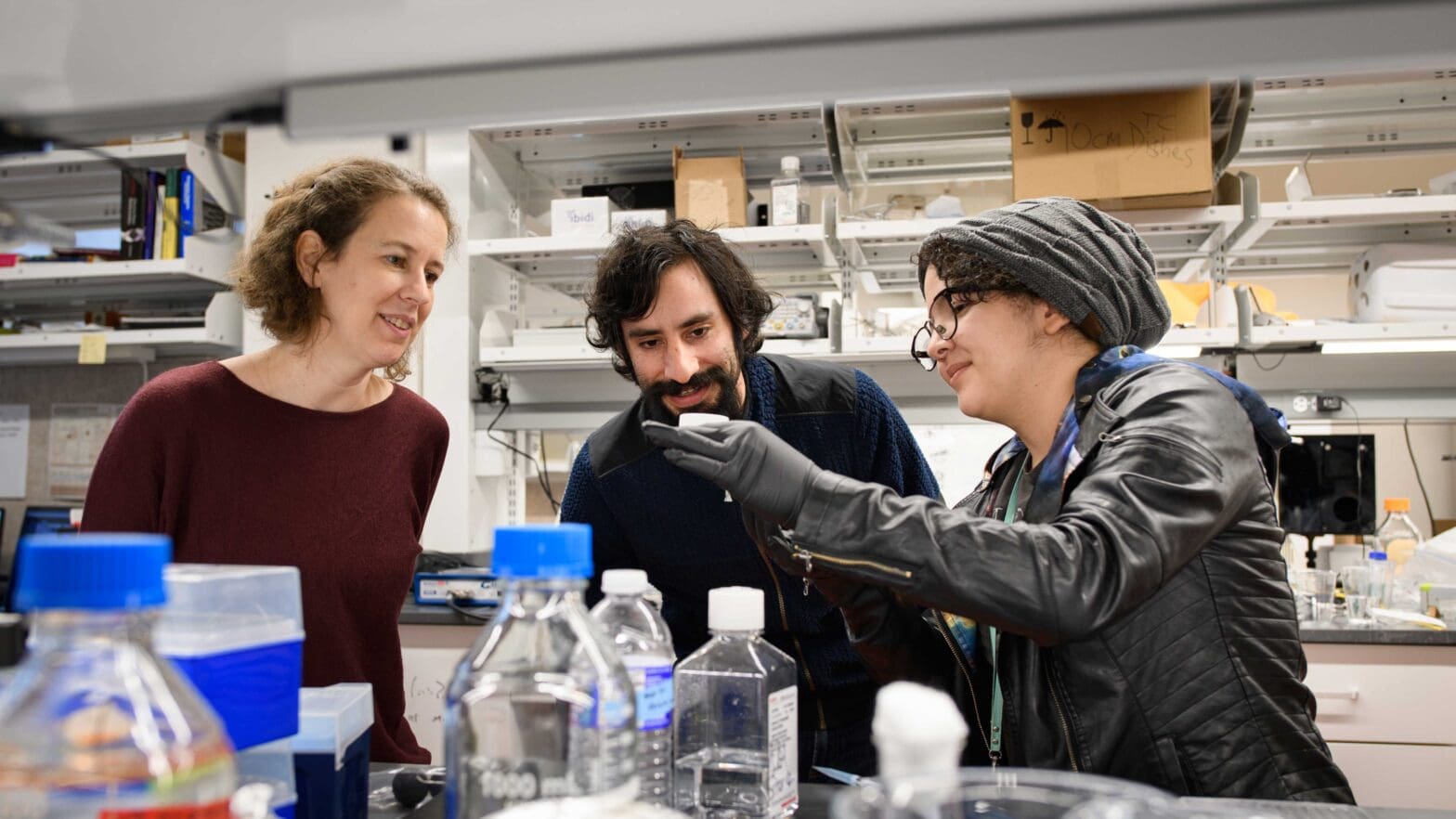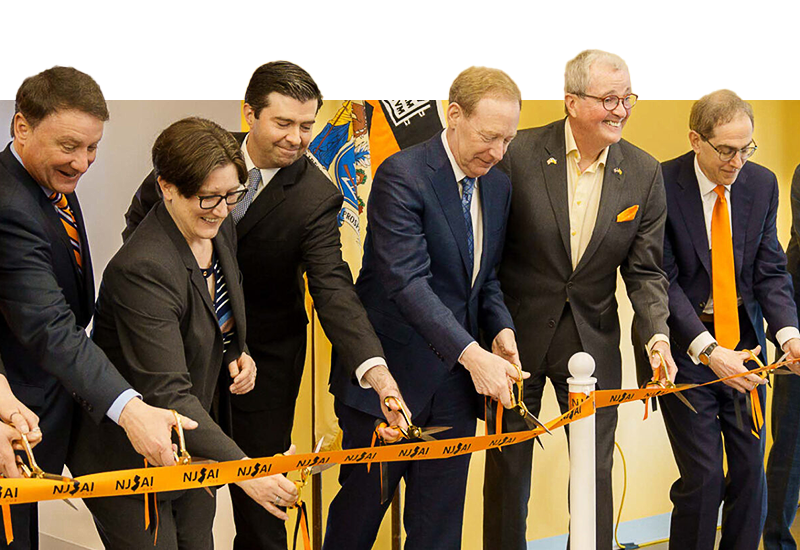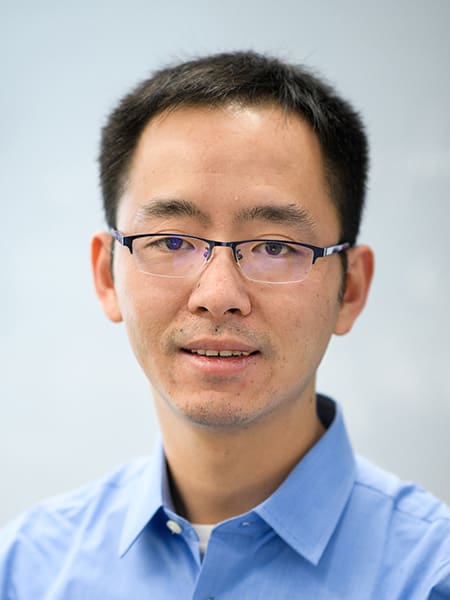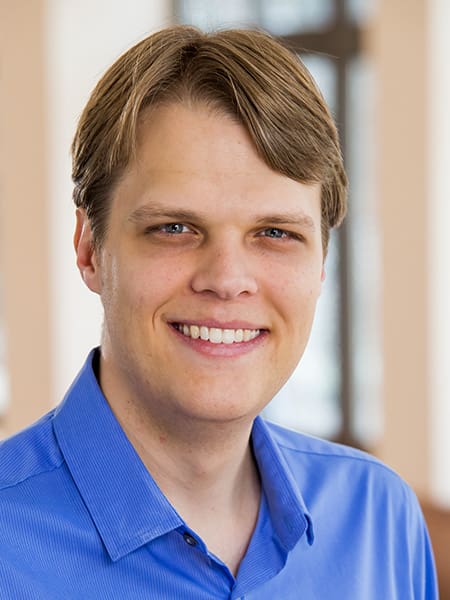
Innovation funds propel research to improve health, computing and sustainability
By
on
Daniel Cohen, an assistant professor of mechanical and aerospace engineering, and molecular biology graduate student Lisset Duran Rosario recently began investigating aspects of water bears’ biology and material properties. Focusing on desiccation proteins that allow the animals to survive in a state of dried-out, suspended animation for up to 30 years, they wondered whether the desiccation proteins might be used as a protective coating to preserve cells. Working with Eszter Posfai, an assistant professor of molecular biology who specializes in stem cells and embryonic development, the researchers will first test how the water bear’s proteins function in laboratory cell lines, with plans to expand their studies to stem cells and mouse embryos.
Innovation funds “are good for interdisciplinary work across departments, to get [preliminary] data that you wouldn’t easily be able to get otherwise,” said Cohen. Posfai emphasized that it is not usually possible to obtain funding from more traditional sources for such pilot-stage projects.
Their collaboration is supported by the Helen Shipley Hunt Fund, which focuses on research aimed at improving human health. Funded by Princeton alumni, parents and other donors, this year’s Innovation Research Grants total more than $1.3 million. In addition to the Helen Shipley Hunt Fund award, they include:
Project X Fund
Project X funding enables Princeton engineering faculty members to pursue exploratory research geared toward “creativity, tinkering and risk-taking.” The fund is made possible by G. Lynn Shostack in honor of her late husband David Gardner, a 1969 Princeton graduate.
A Project X grant will allow José Avalos, an assistant professor of chemical and biological engineering and the Andlinger Center for Energy and the Environment, to pioneer a method of growing mixed microbial cultures for the sustainable production of biofuels and other useful chemicals. Avalos’ team will apply expertise in optogenetics, a technique used to control cellular behavior with light, to fine-tune the growth rates of yeast and bacterial strains engineered to carry out different parts of biosynthetic pathways. By overcoming longstanding challenges, the project aims to increase the yields and economic viability of renewable fuels and materials.
Stephen Lyon, a professor of electrical engineering, seeks to advance quantum computing by developing a new nanoscale device for rapidly measuring the spin of an individual electron. Spin is a property of electrons that can be used for information processing in quantum computers, which hold potential for performing complex computations that are not tractable with conventional computers. Lyon’s proposed device uses superfluid helium, in which quantum bits are better protected from the environment than in silicon devices currently in development.
Michael Mueller, an associate professor of mechanical and aerospace engineering, will explore an approach to improve the simulation of nuclear fusion plasmas. While nuclear fusion is a promising technology for producing clean, renewable energy, building fusion reactors is extremely costly and time-consuming, and researchers must rely heavily on simulations to test and optimize their designs. Mueller’s research group aims to apply computational techniques commonly used in turbulence, combustion and particle-laden flow research to make fusion plasma simulations more computationally efficient.
Olga Russakovsky, an assistant professor of computer science, is launching a collaborative project to develop artificial intelligence (AI) tools for law enforcement agencies to analyze data from police-worn body cameras. The tools could help agencies design programs aimed at limiting the risk of violence in police-civilian interactions. Working with politics professors Dean Knox and Jonathan Mummolo and sociology professor Brandon Stewart, Russakovsky plans to develop automatic activity recognition and annotation methods for the video footage. The project’s first stages are focused on securing legal agreements, protecting privacy, and evaluating manual annotation procedures.
J. Insley Blair Pyne Fund
Established in memory of physics and electrical engineering professor and Princeton graduate J. Insley Blair Pyne, this fund supports research at the intersection of engineering and neuroscience.
This year, the fund was awarded to Nan Yao, a senior research scholar and lecturer with the rank of professor at the Princeton Institute for the Science and Technology of Materials (PRISM), and Nieng Yan, Princeton’s Shirley M. Tilghman Professor of Molecular Biology. Building on previous collaborative work, Yao and Yan plan to invent a new device and novel approaches to study the structures of voltage-gated ion channels, which are responsible for generating and propagating electrical signaling in the nervous system. Understanding the structures and mechanisms of these channels at atomic-level resolution could inform the development of new therapies for conditions such as chronic pain, epilepsy and autism.
Science to Action Fund
The Moore Charitable Foundation’s Science to Action Fund supports research aimed at understanding and improving freshwater conservation in the United States that bridges the gap between lab work and practical solutions.
This year’s grant was awarded to Elie Bou-Zeid, a professor of civil and environmental engineering, to study water and carbon fluxes in terrestrial ecosystems. With collaborators at Duke University and at Princeton’s Geophysical Fluid Dynamics Laboratory, Bou-Zeid’s team will create observational data analysis methods and models to assess the differential contributions to water and carbon cycling of 1) soil evaporation and microbial respiration and 2) plant transpiration and photosynthesis. These new approaches will improve researchers’ understanding of ecosystems’ roles in climate change and responses to droughts.
Additional Engineering Research Funds
Additional funds for innovative engineering research include funds supported by multiple anonymous donors, as well as the Yang Family Fund and the David T. Wilkinson Innovation Fund.
A grant from funds established by anonymous donors will support work led by Rodney Priestley, a professor of chemical and biological engineering and Princeton’s vice dean for innovation, to design lightweight, environmentally friendly fire-resistant materials. Priestley’s team plans to characterize the pore structure, fire resistance and other properties of a novel aerogel recently developed in his lab. The new material has potential applications in packaging, transportation, construction, electronics and telecommunications. The work is spearheaded by Sehmus Ozden, a postdoctoral research associate at the PRISM, co-advised with Craig Arnold, the Susan Dod Brown Professor of Mechanical and Aerospace Engineering and director of PRISM.
Yang and Wilkinson funds were awarded for three projects by faculty members in electrical engineering and computer science. One of the grants will allow Assistant Professor of Electrical Engineering Yuxin Chen to develop a new suite of statistical reasoning tools to assess uncertainty in results of complex machine learning algorithms, such as those used in recommendation systems, sensor networks or MRI image reconstruction. The new tool will give researchers more informative and reliable interpretations of estimates based on noisy or incomplete data.
A second grant was awarded to Jia Deng, an assistant professor of computer science, to create a new data set for 3-D vision, enabling researchers to design algorithms that detect 3-D shapes in images. This capability has the potential to improve systems in robotics, including autonomous vehicles. The project draws inspiration from the success of ImageNet, a computer vision data set of 14 million images, which Deng helped develop in 2009 with colleagues from Princeton and Stanford University.
Assistant Professor of Computer Science Mark Zhandry will develop a new type of cryptocurrency that would take advantage of the emerging capabilities of quantum computers. Existing cryptocurrencies rely on blockchains, a technology for decentralized record-keeping that is computationally expensive to maintain. Quantum computers can be used to eliminate this need for record-keeping while using existing classical communication networks. In addition to cryptocurrencies, the approach could have applications for digital contracts and transaction auditing.






















